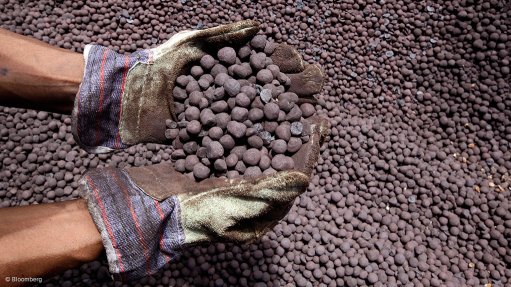Europe’s manufacturing powerhouse scouts for ‘critical’ minerals to maintain technological edge


Canadian German Chamber of Industry and Commerce mining and mineral resources manager Christopher Schmidt
As a nation heavily reliant on commodity imports to sustain its industrial output, Germany is seeking closer ties with the Canadian mining industry to maintain its pole position as Europe’s manufacturing powerhouse.
Like most other industrial countries, Germany needs just about every mineral and metal, but it is the availability of so-called ‘critical’ materials – some of which Canadian companies are involved in locally and abroad – that is top of mind in this European country.
The European Union (EU) has identified 14 minerals out of 41 analysed as economically important raw materials, based on their production concentration in China, Russia, the Democratic Republic of Congo and Brazil, which is compounded by low substitutability and low recycling rates. These are: antimony, beryllium, fluorspar, graphite, germanium, indium, magnesium, rare-earth elements, tungsten, cobalt, tantalum, platinum-group metals (PGMs), niobium and gallium.
Canada ranks in the top five producing countries for at least three of the minerals on the EU’s ‘most wanted’ list, including cobalt, PGMs and tungsten. Cobalt is, for instance, crucial for the manufacturing of lithium-ion batteries and synthetic fuels, while platinum is used in fuel cells and catalysts and palladium in seawater desalination. And although it does not yet produce much on the rare earths front, the country has aspirations to supply at least 20% of anticipated global demand by 2018, with advanced projects in a number of cases.
Christopher Schmidt, mining and mineral resources manager at the Canadian German Chamber of Industry and Commerce’s (CGCIC’s) Competence Centre for Mining and Mineral Resources, explains that critical metals, such as rare earths, tungsten, tantalum, indium and germanium are crucial to Germany’s high-tech manufacturing processes.
“The sustained and secure availability of these metals is important to maintain Germany’s technological edge in manufactur- ing and the need to keep costs from escalating is crucial for the competitiveness of Germany’s industry,” he tells Mining Weekly.
At the moment, the German industry sources commodities through the world market or through delivery contracts, but this poses a high risk. In the future, Schmidt believes that the industry will have to look at more backward integration. “The industry should secure demand through interests in mining projects.”
Despite the importance of mineral resources to the German economy, the government does not intend to become commercially active in mining through, for instance, a State-owned mining company, nor does it intend to stockpile industrial raw materials. Its backing involves support for the private sector in the fields of policy and research.
In January last year, the federal government set up an exploration support programme to help foster exploration activities of German companies. It disburses a conditional repayable loan of €27.5-million over three years to secure critical raw materials. Also, the federal government has set up the German Resources Agency (DERA) to support securing supply. It provides minerals information and analysis and advises companies on pricing and supply risks. DERA is working with the Competence Centre for Mining and Minerals in Canada, Chile and South Africa.
In 2012, Germany imported commodities to the value of €150.4-billion, of which energy resources accounted for the largest part of the import bill.
From Canada, it sources C$2.6-billion worth of minerals and metals, with iron-ore, nickel, copper, aluminium and silicon topping the list in terms of value. The country also accounts for more than 20% of German imports in tellurium metal, selenium metals, titanium ore and concentrate and tungsten powder. Other imports include coal, cobalt and ferro neodymium.
“Canada supplies a broad range of metals German industry needs and offers great potential for increasing the long-term resource supply security Germany needs,” Schmidt states, adding that the country presents “great” business opportunities.
He says the Competence Centre for Mining and Mineral Resources’ mandate is to bring German companies to Canada to participate and invest in mining projects to secure their resource supply. There are already some German companies with mining assets in Canada, such as potash producer K+S Aktiengesellschaft, which acquired a mining project in Saskatchewan.
Funded by the German Ministry of Econo- mics and Technology, the CGCIC opened the Competence Centre for Mining and Mineral Resources in Toronto, in 2010. Its main focus is to foster business relationships between Canada and Germany in the mining sector.
Schmidt explains that the Competence Centre raises awareness about Canada as a resource supplier and mining market, it provides market information to the German government and industry and strengthens dialogue on how to establish sustainable supply chains for speciality metals and raw materials between the two countries.
The Competence Centre, along with DERA and Helmholtz Institute Freiberg for Resource Technology (HIF), is organising the German presentation room at the Prospectors and Developers Association of Canada convention on March 4, where Germany’s mineral resource strategy, its equipment and engineering prowess and mineral processing technology and innovations will be discussed.
Schmidt points out that Germany provides market-leading mining equipment and spe- ciality services that can help to meet the challenges in the Canadian mining industry. “German companies supply equipment to the exploration, mining and mineral-processing industries around the world and are well-known for their excellence in engineering.”
About 92% of Germany’s mining supply production is being exported to key markets around the world and, despite the financial crisis, it is growing at an average of 13% a year. Nearly 130 branch members of the German Mining Equipment Association achieved sales worth about $7.4-billion during 2012.
The HIF is also working with leading rare earths projects in Canada and is starting a research partnership with McGill University, in Montreal, Quebec.
Comments
Press Office
Announcements
What's On
Subscribe to improve your user experience...
Option 1 (equivalent of R125 a month):
Receive a weekly copy of Creamer Media's Engineering News & Mining Weekly magazine
(print copy for those in South Africa and e-magazine for those outside of South Africa)
Receive daily email newsletters
Access to full search results
Access archive of magazine back copies
Access to Projects in Progress
Access to ONE Research Report of your choice in PDF format
Option 2 (equivalent of R375 a month):
All benefits from Option 1
PLUS
Access to Creamer Media's Research Channel Africa for ALL Research Reports, in PDF format, on various industrial and mining sectors
including Electricity; Water; Energy Transition; Hydrogen; Roads, Rail and Ports; Coal; Gold; Platinum; Battery Metals; etc.
Already a subscriber?
Forgotten your password?
Receive weekly copy of Creamer Media's Engineering News & Mining Weekly magazine (print copy for those in South Africa and e-magazine for those outside of South Africa)
➕
Recieve daily email newsletters
➕
Access to full search results
➕
Access archive of magazine back copies
➕
Access to Projects in Progress
➕
Access to ONE Research Report of your choice in PDF format
RESEARCH CHANNEL AFRICA
R4500 (equivalent of R375 a month)
SUBSCRIBEAll benefits from Option 1
➕
Access to Creamer Media's Research Channel Africa for ALL Research Reports on various industrial and mining sectors, in PDF format, including on:
Electricity
➕
Water
➕
Energy Transition
➕
Hydrogen
➕
Roads, Rail and Ports
➕
Coal
➕
Gold
➕
Platinum
➕
Battery Metals
➕
etc.
Receive all benefits from Option 1 or Option 2 delivered to numerous people at your company
➕
Multiple User names and Passwords for simultaneous log-ins
➕
Intranet integration access to all in your organisation



















